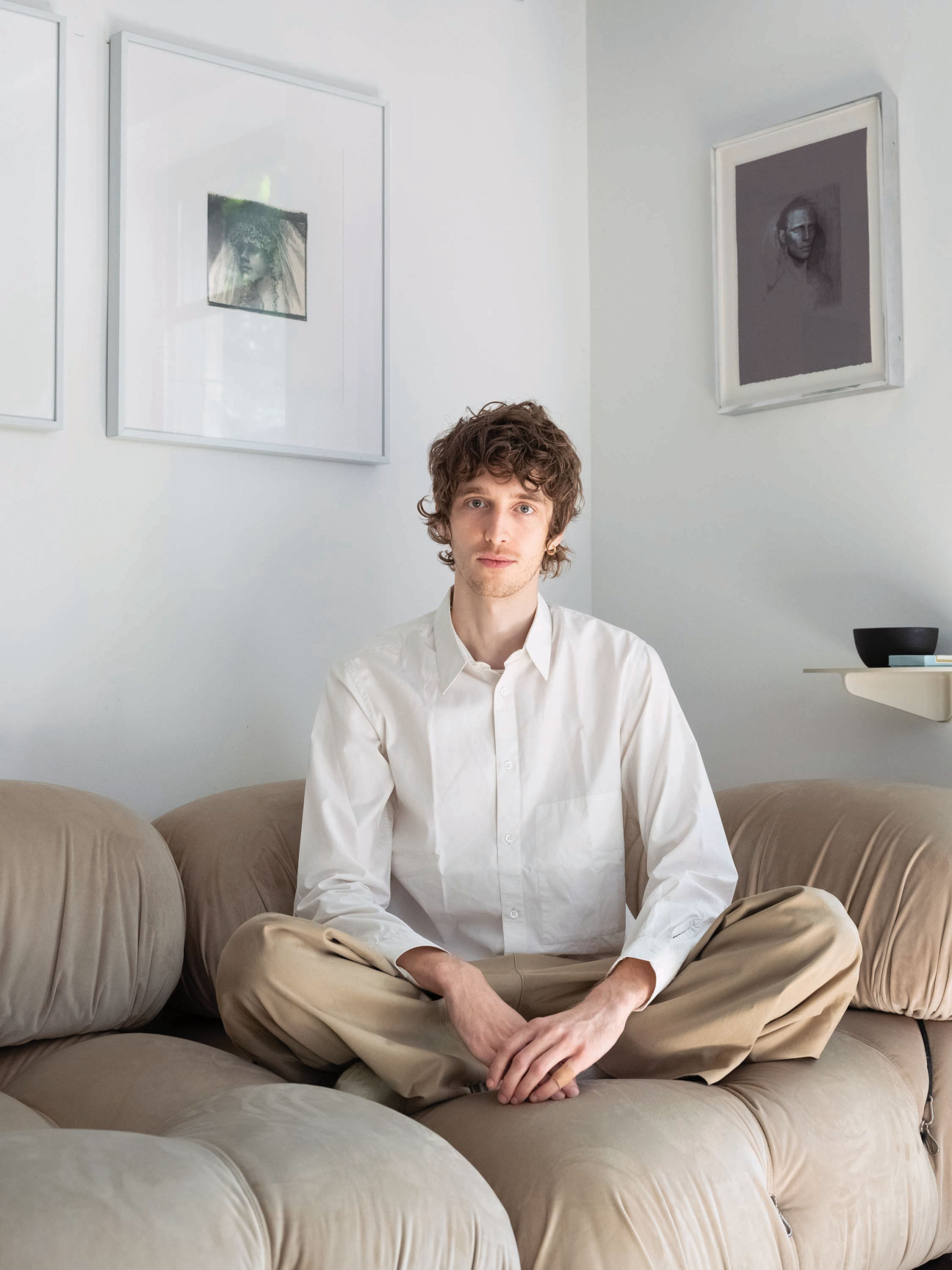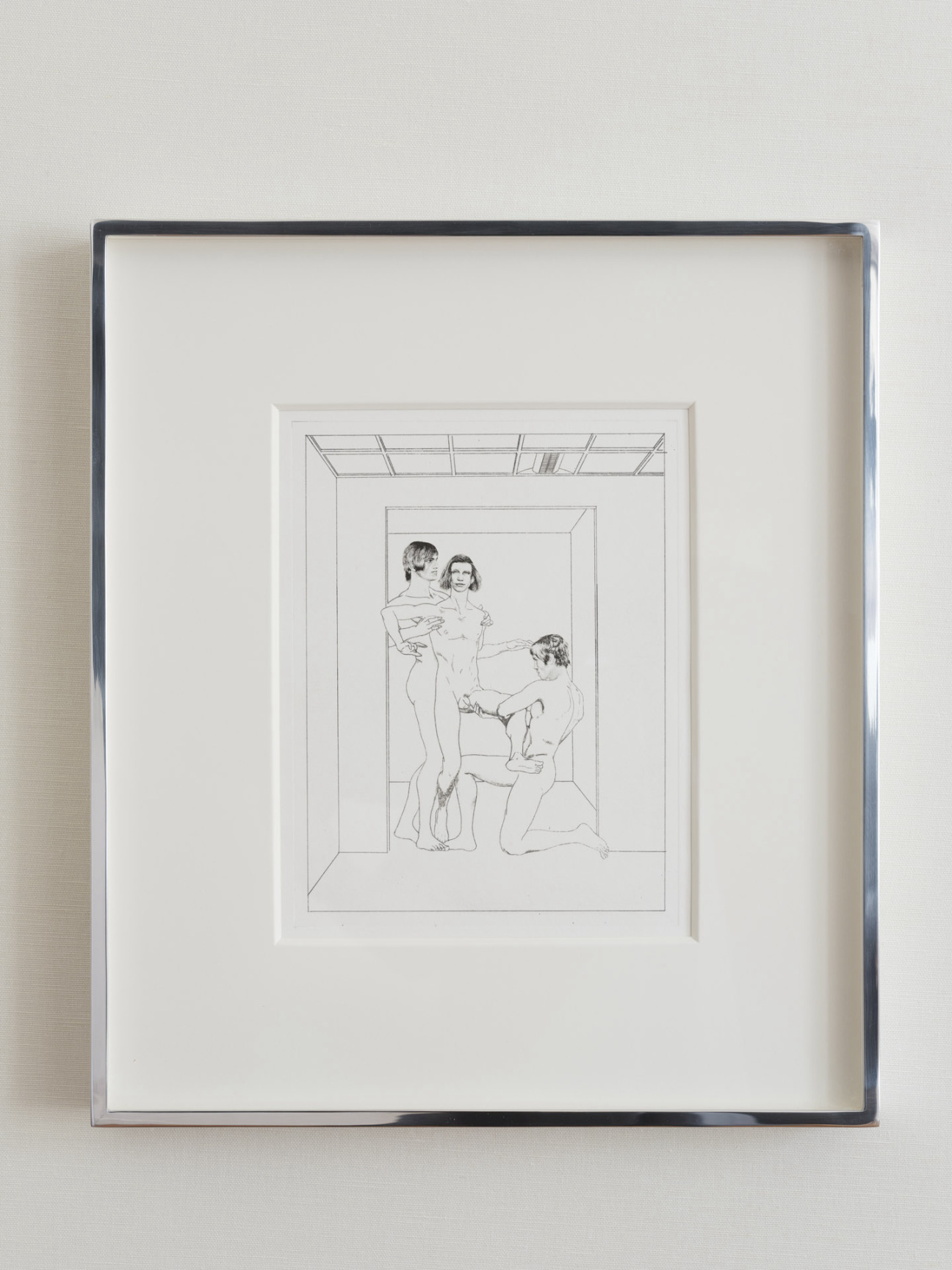
Only a few years ago, Hardy Hill identified as a theologian. The artist—who is as lithe and mysterious as the figures who populate his dry and withholding copper intaglio etchings—studied printmaking as an undergraduate at RISD before pivoting to religious studies after his first encounters with the art world’s commodified underbelly. “Art seemed to no longer make sense as a form,” he remembers.
In 2017, Hill enrolled at Union Theological Seminary in New York, in search of “something that felt more honest.” For Hill, theology came to represent “this dematerialized, impersonal version of art,” and academia promised some kind of critical distance from the forces of the market, which of course, Hill laughs, “turned out not to be true.”

After graduating from the seminary in 2020, the artist returned to printmaking with obsessive fervor. A print, he explains, is “something you have to commit like a crime”—unlike with a painting, “there’s no amorous exchange.” His drawings, like the most gripping cold cases, are at once tidy and unresolvable.
Each work begins with a simple phrase, selected by the artist to describe the relationship between a set of often male, muscular, and spry figures. The resulting image is at once a straightforward translation of the text and a total betrayal of it.
Sober, meticulous, and withdrawn, Hill focuses on scenes from domestic, not spiritual, life. If his drawings have an animating principle at all, it is self-abnegation. When asked about the curious absence of religious iconography and divine narratives in the work, Hill muses, “In the Gospels, God never appears.”

This is not to say that the 30-year-old makes “Christian art or even theologically inflected art,” but rather that the interplay in his drawings between what’s there and what’s not echoes the silence and truancy of the Abrahamic traditions.
Recently, Hill has made a significant departure from the technical minimalism that marked his early work with a new series of drawings done on film and exposed as photographs. These works, which he calls “contact prints,” wrestle with the artist’s ongoing interest in the camera.
They also return hue, shadow, and lushness to Hill’s work, which long concerned itself with the surgical excision of everything that he felt constituted excess. In the spring of next year, these new works will be presented in Hill’s second solo exhibition at New York’s 15 Orient, which promises to confirm his singular status as a thoughtful and unpredictable image-maker.
For more about CULTURED's 2023 Young Artists, read our features with Alex Tatarsky, Giangiacomo Rossetti, and Adraint Khadafhi Bereal.










 in your life?
in your life?

